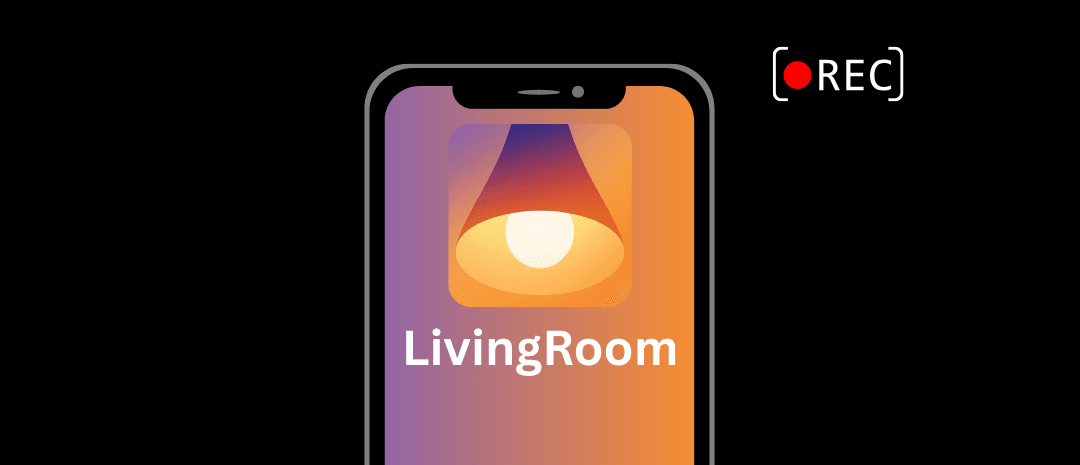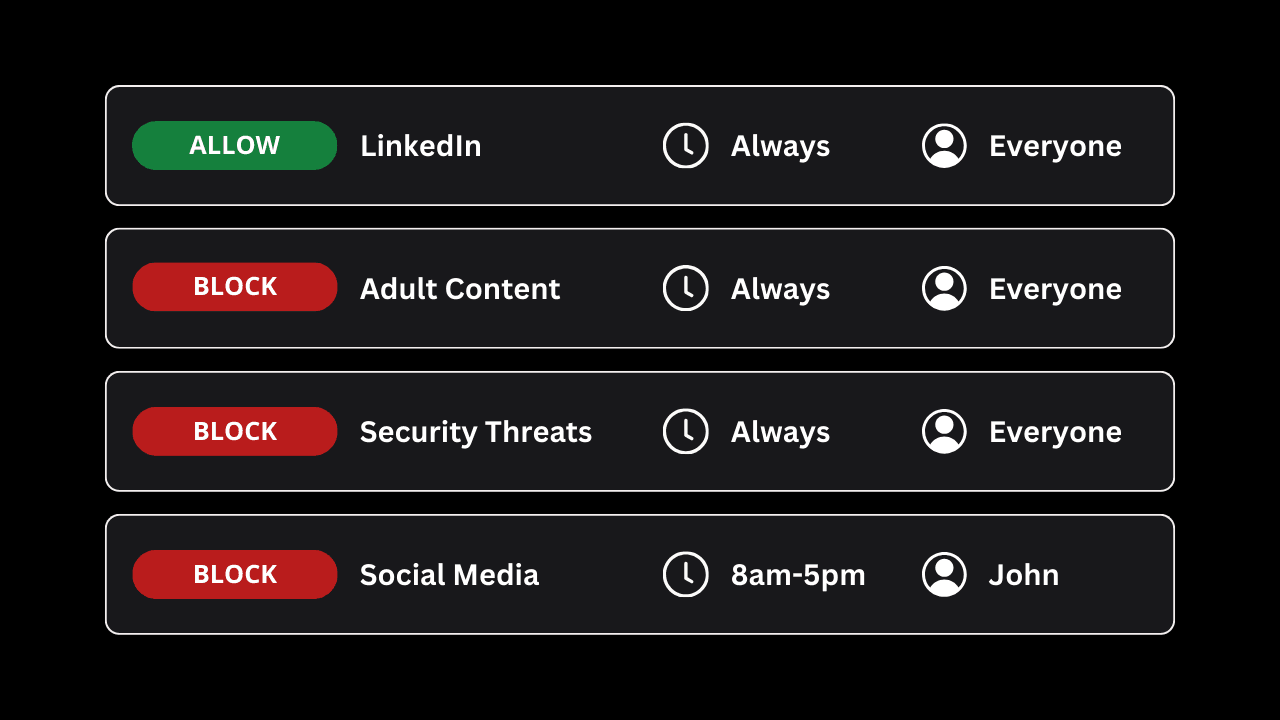Monitoring
How to Monitor Websites that were Visited on Your WiFi
This guide will show you how to monitor sites visited on your wi-fi, whether you have multiple people in your house or you want to keep tabs on your habits

If you are trying to help people in your household be more intentional and safer with their online activity, one of the best ways to do this is by encouraging more transparent internet browsing. Although there are numerous ways to increase internet browsing transparency, you might wonder: can I monitor the websites visited on my WiFi network?
In our experience running a platform dedicated to helping people overcome harmful aspects of the internet, these are the most common reasons that people want to monitor traffic:
- Work with a partner to overcome addictions through increased browsing transparency and content filtering.
- Check to see if a partner's browsing activity is an indication of dishonesty.
- Ensure that a child is staying safe online.
- Ensure that your Wifi is not being misused.
Monitoring WiFi traffic is not as difficult as some people might think. However, you should try to take a few things into consideration when determining the best strategy:
- Are you only concerned about Home WiFi traffic, or do you care about internet use on other connections like 4G/5G connections?
- You need to account for common bypass techniques used to get around monitoring?
We recommend a few monitoring techniques, which can be combined together for the most transparent browsing experience possible.
Monitoring websites visited on a child's iPhone or iPad
If you want comprehensive monitoring of every website your child is visiting on an iPhone or iPad, even if they aren't at home using the home Wifi internet connection, you can use a screen monitoring app like LivingRoom for Families .
While your child uses their iPhone or iPad, they will see a clear recording overlay on the screen. This ensures that they have a constant reminder to browse the internet responsibly.
The LivingRoom app will periodically send screenshots to your parent dashboard so you can review exactly what websites, including specific pages, were visited by your child on their iPhone or iPad.
You can combine this website monitoring approach with other techniques below.

Handling private browsing
Many people know about a web browser's private browsing features, which ensure that browsing history isn't stored after the person finishes using the browser.
There are a few ways to handle private browsing so that you can still examine what websites were visited on this device:
- Connect the device to a DNS Filter so that internet traffic is viewable from a common dashboard. This will capture browsing history even if a device was using incognito mode or deleted history from the browser. We will go into this more later.
- Disable browser features on a shared device to remove the private browsing options.
- Use a monitoring solution that uses screenshots to capture device activity. For example, LivingRoom for Families can be used on a child's iPhone or iPad to monitor web browsing activity regardless of if a private browsing window is being used.
Before we get into DNS Filtering, we recommend getting started by increasing browsing transparency on any shared devices. The main reason we start with this recommendation is that many people who read this article are working with a partner to overcome addictions and dishonesty or trying to protect a child.
The first thing to do would be to work with that person to increase browsing transparency by disabling private browsing features on smartphones and computers. This disables the ability to delete browser history or use Incognito Mode.
This ensures that when you check the browsers History section that you'll have a more complete picture as to what was being searched for on that device and it will open the door to healthier discussions around internet usage.
Using a DNS Filter to Monitor Internet Traffic
The most comprehensive approach to monitoring internet usage on a home network is through the use of a DNS Filtering service.
The primary purpose of a DNS Filter is to categorize online content and then provide an internet firewall for any devices that are connected to the internet. You can view traffic logs for any connected device using a DNS Filter as well.
For example, you can use Tech Lockdown's Activity Logs to examine browsing activity. You'll be able to search and filter the websites visited on any connected device:
DNS Filtering services provide a few advantages compared to examining your router's logs (if it supports logging):
- View websites visited based on category
- See date/timestamps and number of times visited
- View DNS logs for devices, even if incognito/private browsing modes were used
- Block categories of content.
An important thing to note when using a DNS Filter:
- Anonymous browsing with proxies and VPNs. This will obscure your DNS logs so that the actual websites visited aren't known. You'll just see a high visit count for the
Anonymous Browsingcategory. VPNs are commonly advertised by social media influencers and this is a well-known method for circumventing Wifi monitoring. We will show you how to handle anonymous browsing services. - Handling 4G/5G or other Wifi connections. To bypass DNS Filtering, especially if it is installed on a home router, some people will turn off their Wifi and use their phone's roaming internet. This will bypass logging entirely, so we'll show you how to account for this.
Configure a DNS Content Policy
Before you install a DNS Filter, you should start by configuring a DNS Content Policy to decide what categories of websites or specific applications are allowed, blocked, or enforced with SafeSearch.
There are a few reasons to set a Content Policy, even if you are only concerned with monitoring:
- Enforce SafeSearch or YouTube restricted mode to filter search results. Since you can't use Wifi monitoring techniques to see specific videos watched or search terms used on Google, this is a great approach to limiting the results a person sees without showing them a block page.
- Schedule internet usage by setting automatic internet cutoff times . Dishonest or addictive browsing habits tend to happen late at night where monitoring is more difficult, so you can narrow your monitoring scope by scheduling when the internet can be used.
- Block Anonymous browsing, which is commonly used to bypass DNS logging so that you only see that an
Anonymizerdomain was visited instead of the actual website viewed on the device.
As an example, I'll update my Tech Lockdown Content Policy to block a few apps, categories, and enforce SafeSearch on Google .
I'll also create a rule that enforces YouTube restricted mode to filter results on YouTube .
Next, I'll select the Anonymizer category when creating a block rule to prevent access to proxies/VPNs that bypass effective DNS logging:
Then, I'll create a scheduled rule to limits access to distracting and problematic apps/websites to my lunch break:
And finally, I'll block the entire internet after 9pm on weekdays and 11pm on weekends:
In order to ensure that smart devices can still operate at night, like a home security system, I'll create a whitelist rule to exclude those from being blocked:
Now you need to configure your home router to point to DNS Filter so that you can apply this Content Policy to devices using your home Wifi and also view the DNS logs for connected devices.

Configure your Home Router Start Logging Traffic for Devices using your Wifi
Now that the DNS Content Policy is set, it's time to connect your router so that all devices using your home Wifi benefit from content filtering and have more transparent browsing activity.
If you are using Tech Lockdown, you can follow our router installation guide or reach out to our support team to request a guided installation session.
Otherwise, the process looks like this:
- Login to your Router
- Point your router's DNS to the DNS Filter
Router login instructions are found on the back or side sticker of the device that handles your home internet connection.
Then, most DNS Filtering services will allow you to connect by using your router's admin panel to specify IPv4 or IPv6 addresses that correspond with the service.
Once these steps are complete, you should start to see browser activity going forward.

Install DNS Filtering to Monitor Traffic on Roaming Connections
One of the downsides of using your home router to monitor browsing activity is that this is easily bypassed on a smartphone or computer by turning off Wifi and browsing the internet using a roaming connection like 4G/5G. Furthermore, you won't be able to see browsing activity when a device uses another Wifi connection, like hotel Wifi.
To get around this, you can configure computers and smartphones to point to the same DNS Filter that you installed on your home router. This ensures that your Content Policy is applied at home or when roaming and that you can continue monitoring DNS logs in your dashboard .
There are generally two ways to install:
- Using an application that keeps your device connected
- Configuring device settings to point the internet of the device through the filter
For example, on iPhone, you can install a file that automatically sets the networks settings on your phone to point to the filter.
This is a less obvious way to connect to the filter and many people prefer this over installing an obvious application.

Overcoming Pitfalls of Monitoring Traffic
It can be exhausting to always keep checking your DNS logs to monitor traffic on your home network.
Furthermore, monitoring software isn't always the right decision if you are looking to deter risky online behavior. According to a pair of studies from the University of Central Florida, the use of these apps is actually "associated with teens experiencing more, not fewer, online risks." In addition, the study found that teens would "rather their parents talk to them" and give them "trust and respect" instead of using apps to track their activity instead of communication.
In our opinion, a better strategy involves a combination approach:
- Set block rules in your Content Policy to restrict content accessed on your home internet connection.
- Encourage transparent browsing behavior by disabling private browsing (working with your partner to do this).
- Sharing a Tech Lockdown account so that
One of the advantages of using Tech Lockdown to set a DNS Content Policy is that you can share your account with a partner in a safe way. This is done using Lockable Profiles .
When a profile is locked, your partner cannot make the Content Policy less restrictive, but can make it more restrictive.
This ensures building healthy habits of blocking newly discovered harmful content without opening up a loophole a blocking setup.
Further, sharing an account adds transparency to what Content Policy changes occurred since we provide a History features that shows what was changed.
This is ideal if you are working with a partner to overcome addiction or dishonest behavior or need help holding yourself accountable.

Frequently Asked Questions
Can I see what someone searched on my WiFi?
The short is answer is no. If you have configured your router to monitor browsing activity, you'll only be able to see IP addresses or domains.
For example, if a person on your home network searches for "fruit" on Google, you'll only see that this person visited www.google.com, not www.google.com?search=fruit.
However, you would see that this person visited a Grocery Store website after using google, so you can infer what this person was searching for.
The only way to really see this level of traffic logging is to examine the browser history on the specific device. You probably know how easy it is to delete browser history and use incognito mode to browse without saving search history, but you can actually disable private browsing features as a way to increase browsing transparency.
Can I associate Wifi Traffic with a Specific Person?
This is also quite difficult to do just with devices that are connected to your home internet. If you are worried about a specific smartphone or computer, you'd need to install an application on that device that connects directly to the DNS Filter you are using to monitor traffic. Then, you could likely filter browsing activity by that user.
Your Router might have the ability to view traffic logs for specific devices, but this is a rare feature. We go over this more in-depth in our article on enabling router parental controls .
How do I monitor websites visited on 5G or other Wifi Networks?
A common bypass technique for home internet monitoring is to switch off Wifi to a smartphone and browse using roaming data. Furthermore, a laptop can connect to a smartphone's hotspot and bypass monitoring this way.
The best way to solve for this is to follow our previous instructions for installing a DNS Filter directly on those devices. For example, silently installing a DNS Filter on an iPhone using a configuration file.
See the DNS Filter instructions earlier in this guide to learn more.
How do I handle Proxies and VPNs?
Proxies and VPNs will obfuscate DNS logs so that you see a person visited a Anonmyizer instead of the specific website actually visited.
One way to deal with this is to have a non-Anonymizer policy if you are working with a partner to voluntarily increase browsing transparency. Another way is to block the Anonymizer category using the same DNS Filter you are using to monitor traffic.
There are additional ways to block VPNs and proxies that you can combine with this approach if you want a more robust blocking system.
